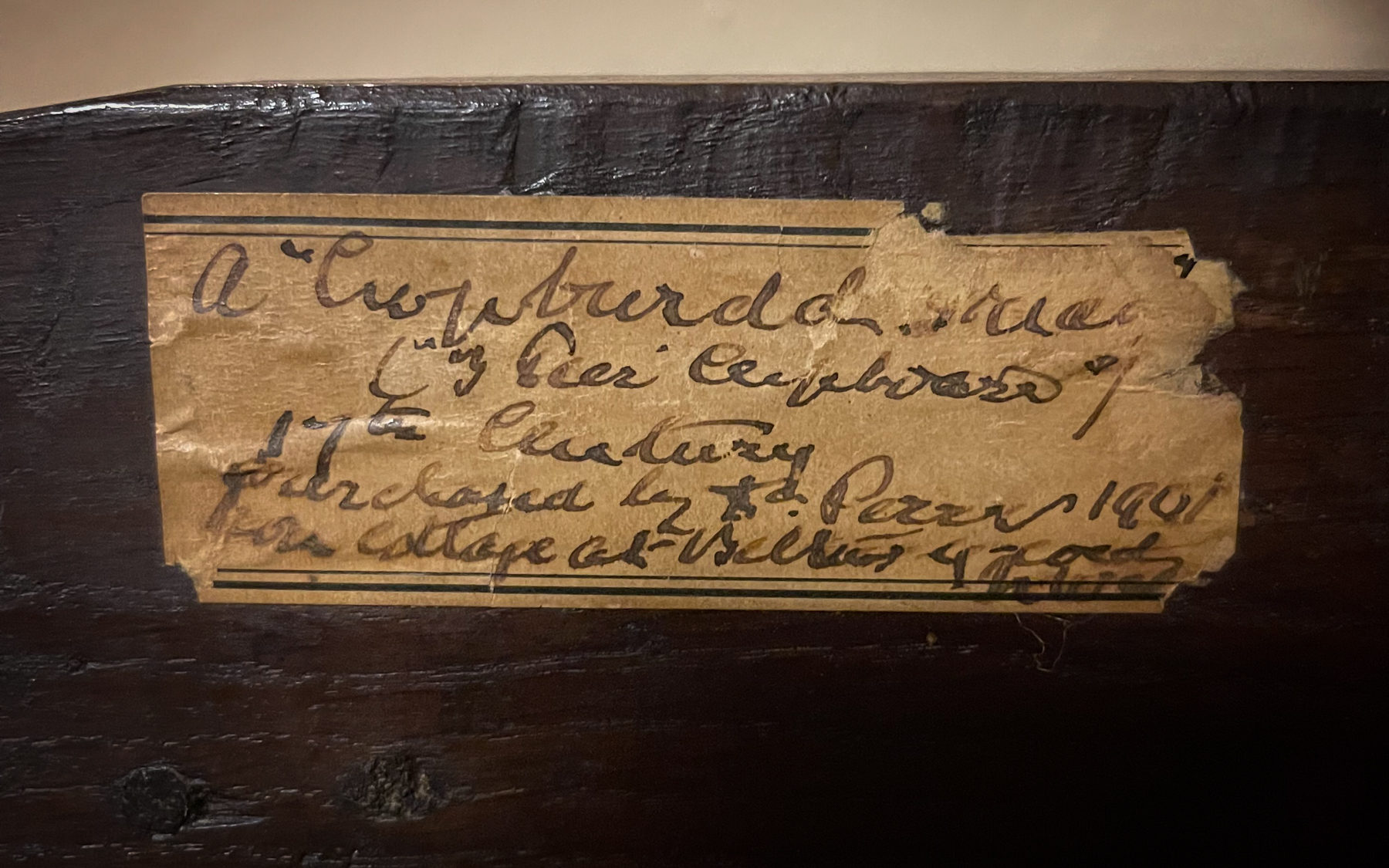From a cottage in Wales
As we plan out what to do when the demolition dust settles, we are continuing to retire and replace furniture that is either not right for the new house or deserves a new life in another home. We’ve had a midcentury hutch and table that we’ve moved through four houses. MC is definitely not the style story of the Refuge.
Two months on, we’ve realized we do not need a table in the living room/den. The table has as its only current purpose collecting junk set down out of convenience. Instead we were thinking a bar would make more sense in its place.
Enter the Welsh court cupboard—labeled by the dealer “18th century English cupboard.”

We love pieces with a story, provenance as they say in the art trade. When we opened one of the upper doors, we found a small pasted note from a previous owner. We have not been able to decipher all of it, but we’ve made some progress and have been able to suss out a little of the piece’s history:
“Cupburdd triad”
(“3 Tier Cupboard”)
17th Century
Purchased by [name] 1801
from cottage at Betws-y-coed Wales
Court cupboards, from the Norman/French word “short”, were popular from about 1550-1675. They were one of the key pieces of furniture in Tudor and Stuart houses. Owners used them to store plate and display their success in the form of silver, etc. [Aside: I coincidentally just finished watching the BBC One miniseries Charles II: The Power and the Passion starring Rufus Sewell.]
Betws-y-coed is picturesque village in northwest Wales in the county of Caernarfonshire, originally part of the Kingdom of Gwynedd. The name translates to prayer house in the woods. The historic village is located within the Snowdonia National Park in a valley near the point where the Llugwy and Lledr rivers meet the River Conwy.

(Terry Kearney, license CC BY-NC 2.0)
Atop the cupboard is a midcentury wine carafe and glasses by potter Robert Maxwell.


Leave a Reply